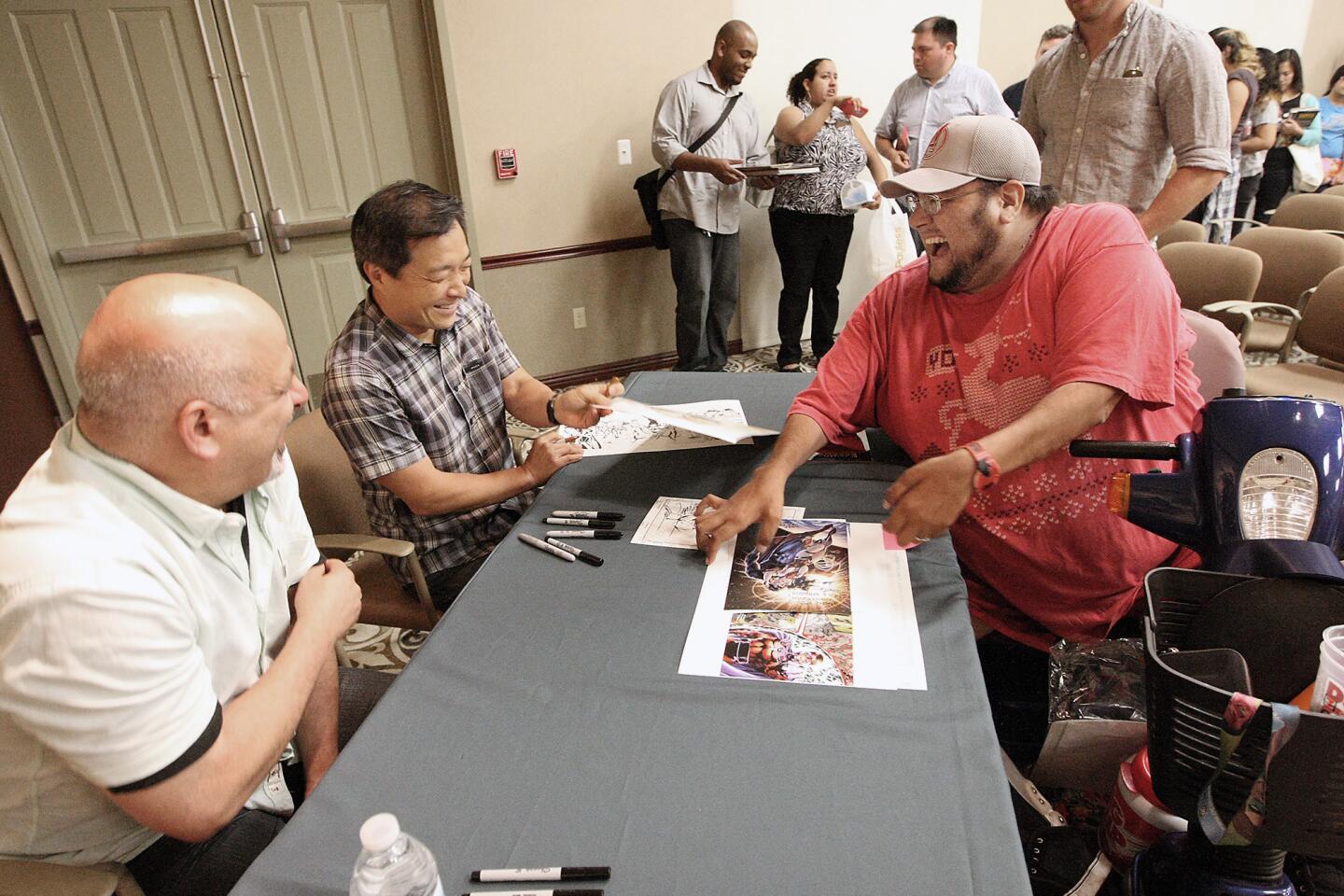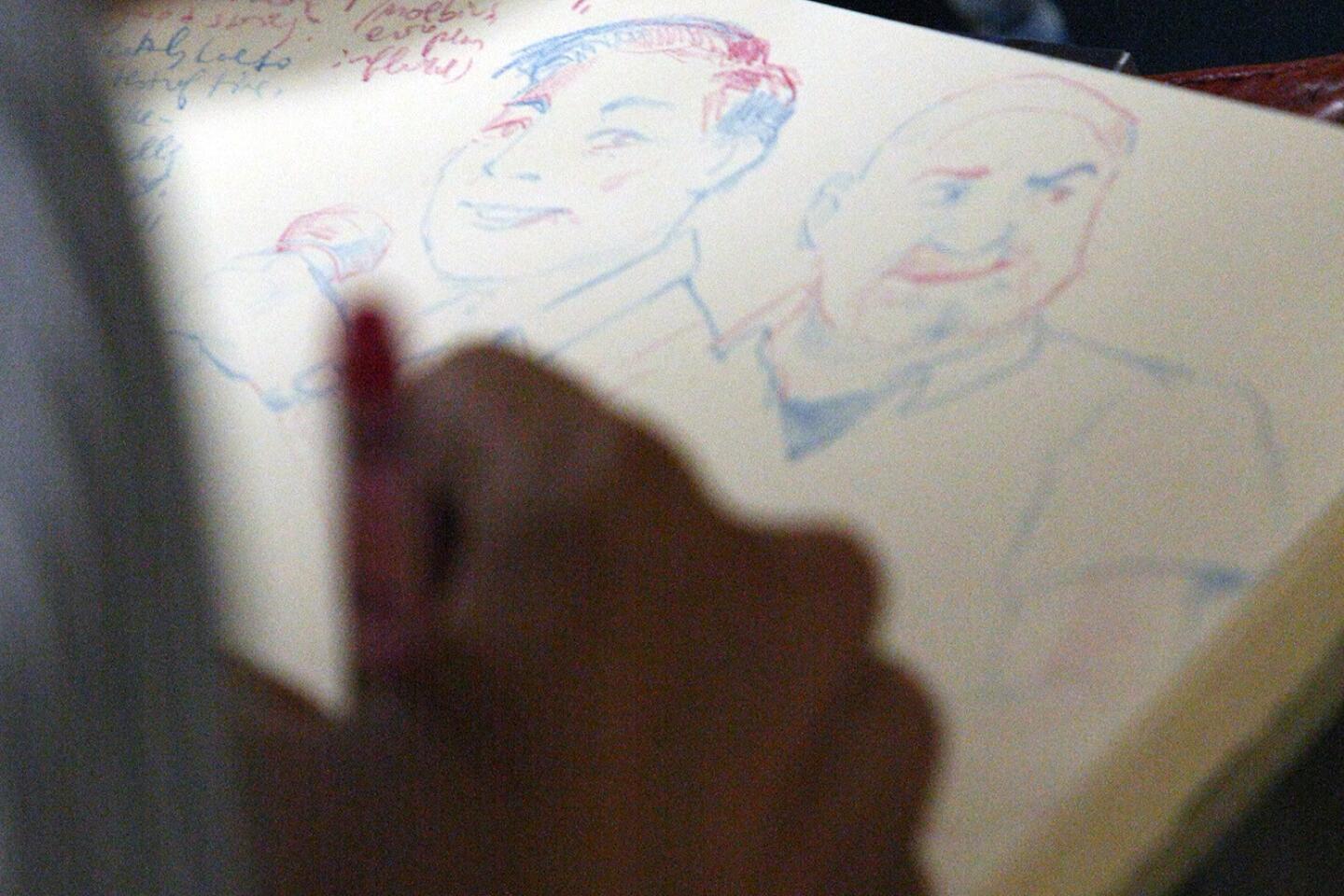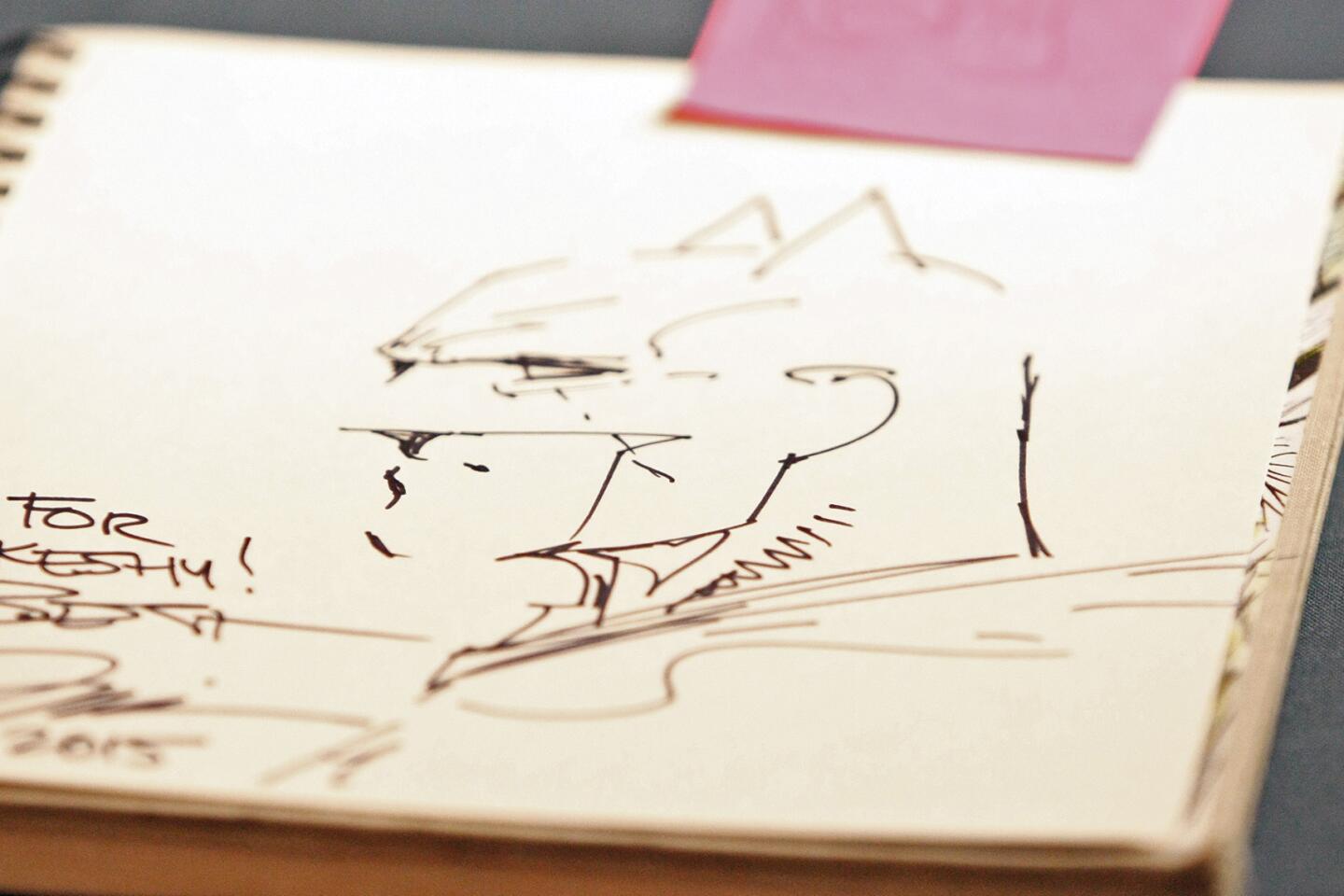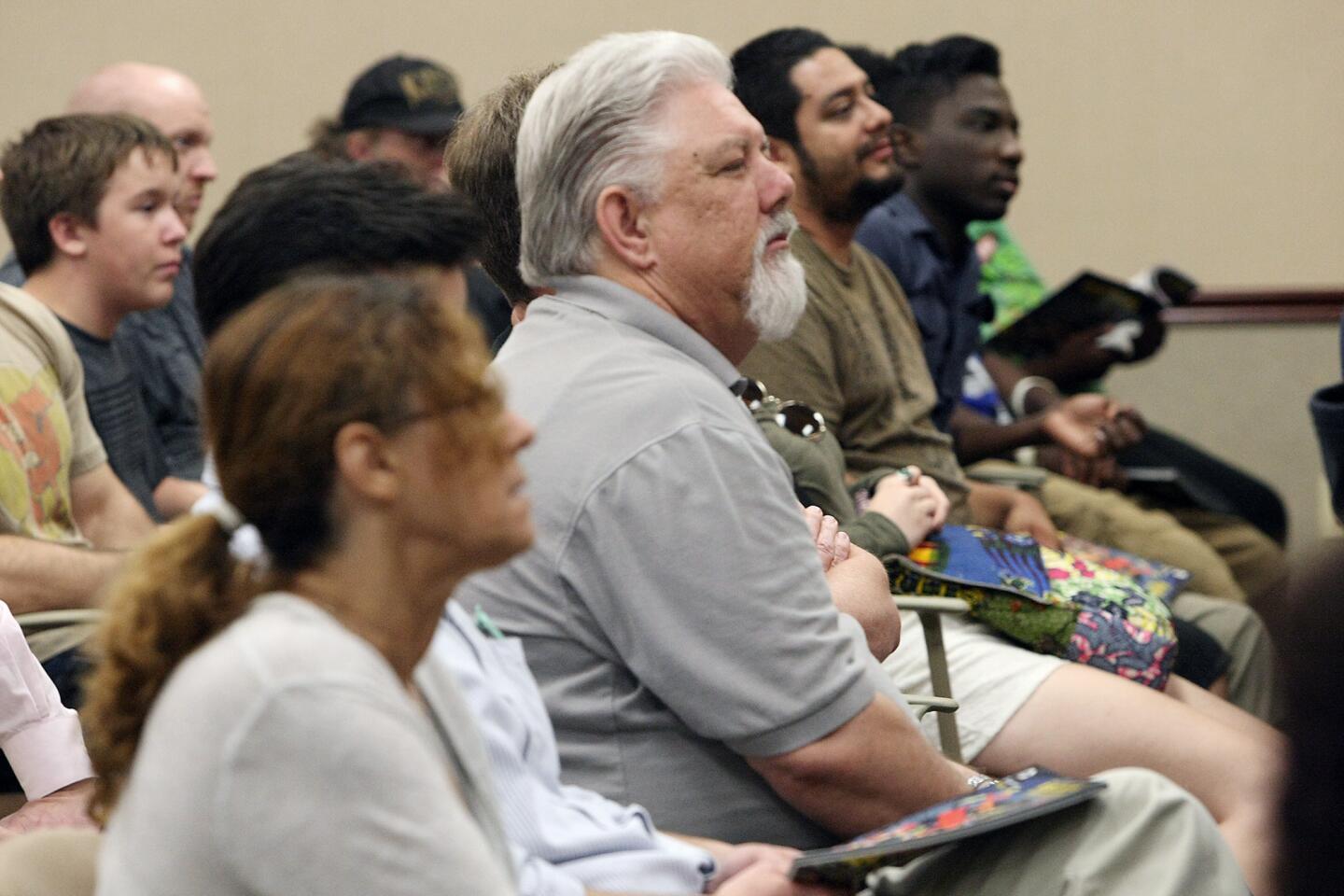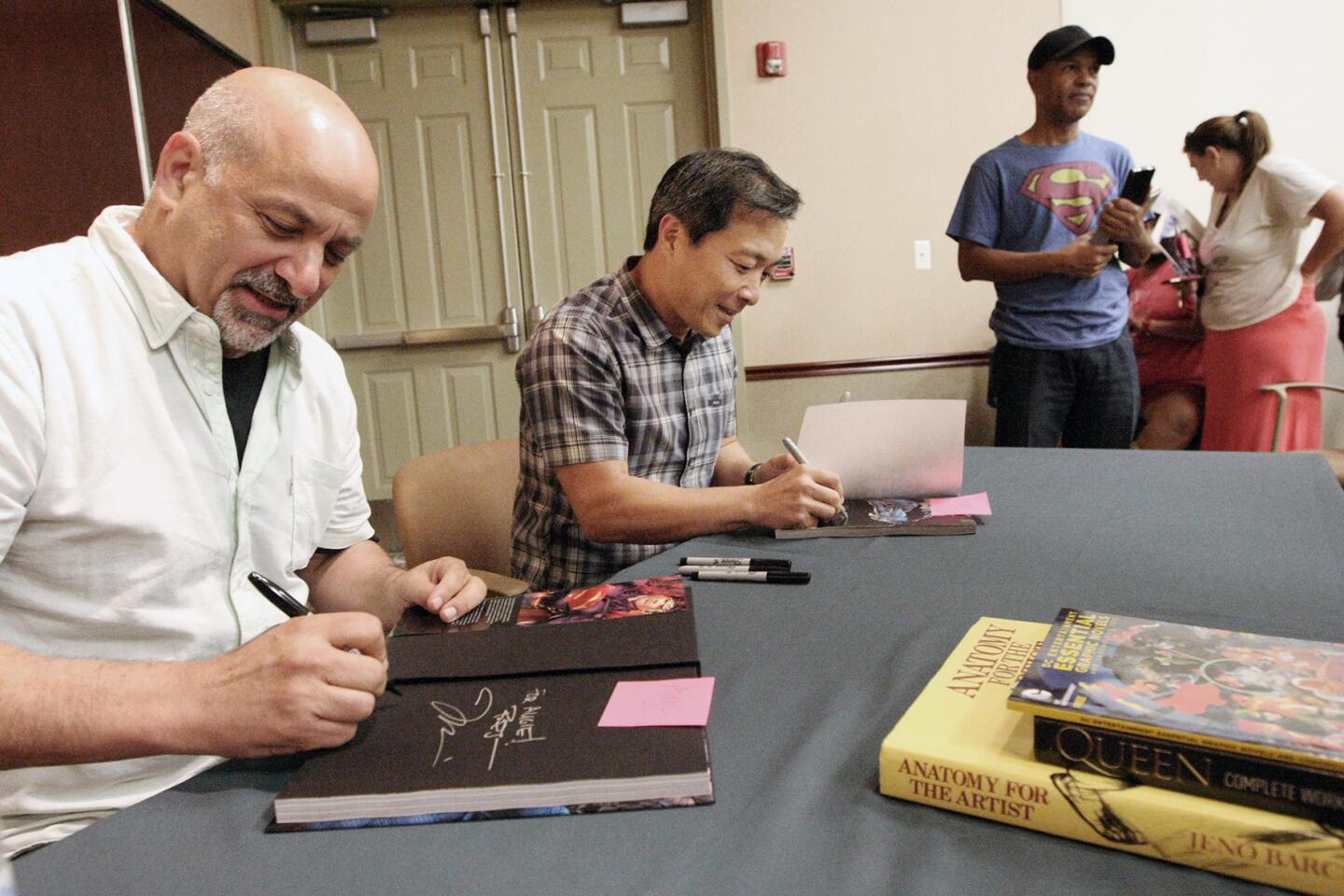DC Comics co-publishers talk shop with fans in Burbank
- Share via
The heroes and villains that populate the worlds of DC Entertainment’s graphic novel library — denizens also of movies, television series, video games and, yes, Lego play sets — are more popular than ever, contend Jim Lee and Dan DiDio.
The duo are co-publishers at the comics giant, a division of Warner Bros., which moved to Burbank earlier this year.
PHOTOS: Local fans meet comic book icons in Burbank
On Wednesday, they swooped into Burbank’s Buena Vista Branch Library for a panel discussion of the “essential” stories from the expansive universe that includes Batman’s Gotham City turf, Superman’s Smallville and Metropolis stomping grounds, and lesser-known locales such as Eugene, Ore., the setting for the “iZombie” series, now a CW television show.
The event, the second in a four-event collaboration between Warner Bros. and the Burbank Public Library, drew a diverse crowd that ranged in age from kindergartners to retirees. Many stayed afterward to have books or other items signed by the comics luminaries who have had their hands in creating and shaping DC’s worlds, among others.
Melissa Potter, interim library services director, said the event’s more intimate setting, compared to the large auditoriums at venues such as the San Diego Comic-Con, was a special opportunity for local comics lovers to meet and speak to their idols.
Those fans included Los Angeles resident Irving Green, who works in Burbank. He told the comic book executives he became “obsessed” with Batman through playing a video-game series.
Fans like Green are being introduced to the characters and stories not through the comics first anymore, but through other media that then inspires them to seek out the source material. Lee said there is a noticeable spike in book sales that follows news on social media about a new movie or TV series.
As a guide for these new fans, publishers create an annual curated catalog of the DC Universe’s essential — or must-have — graphic novels.
DiDio said the process of selecting the most iconic books involved “hours of arguing over what is essential.”
Asked which comic book character he loves most, Lee, who is also an artist credited in hundreds of comics, said it’s whoever is on his drawing table at the moment. He has to love that character 200% for it to translate across the page, he said.
“It gets watered down through time and space,” Lee said before adjusting his calculations. “I’m going to go up to 300%. ... We’ve got to love it 300%.”
Angus Bailey, a seventh-grader at John Muir Middle School who lugged a large binder filled with comics to the event, asked why Superman no longer wears red trunks. The “underpants” as Angus called them, were omitted in both the 2013 movie “Man of Steel” and recent print incarnations.
Lee said Clark Kent’s alter-ego is still wearing them, only “underneath.” He jokingly described a made-up scene of Kent making breakfast, standing in the kitchen in red Jockey shorts while cooking eggs.
The detail, an essential part of Superman’s outfit since 1933, was an important one for Angus, who later said he had been introduced to the character through old television shows and used to jump around in his Underoos pretending to be the caped Kryptonian when he was younger.
“What I really remembered was his red cape and underpants,” he said. “It’s really kind of sad for me.”
At one point, Lee and DiDio discussed how character-origin stories and the industry itself change to appeal to new audiences.
DiDio said that when graphic novels were first introduced, some titles had to be sold in opaque wrappers or kept out of reach of some young readers due to their more mature content, but they’ve since been legitimized.
“And now they’re considered essentials and we’re sitting in a library talking about them,” he added.
